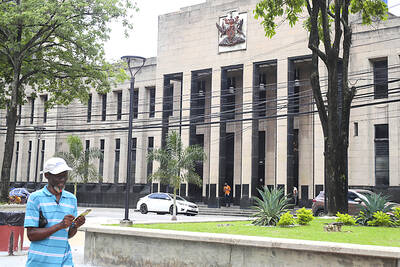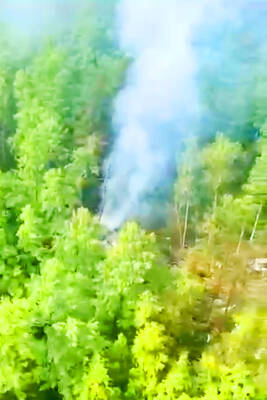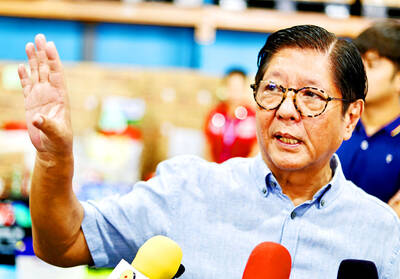China will start backing up its shrinking glaciers with 59 meltwater reservoirs this year as the cost of climate change hits home in the world’s most populous nation.
The far west region of Xinjiang, home to many of the planet’s highest peaks and widest ice fields, will carry out the 10-year engineering project, which aims to catch and store glacier run-off that might otherwise trickle away into the desert.
Behind the measure is a concern that city residents in the region will run out of water supplies once the glaciers in the Tian, Kunlun and Altai mountains disappear.
Anxiety has risen along with alpine temperatures, which are rapidly diminishing the ice fields. The 3,800m Urumqi No. 1 Glacier, the first to be measured in China, has lost more than 20 percent of its volume since 1962, the Cold and Arid Regions Environmental and Engineering Research Institute said. Others in the Tian range have lost similar amounts of ice.
To deal with the consequences, Xinjiang will set aside 200 million yuan (US$28 million) for each of the next three years. In this first phase, 29 reservoirs will be built, mostly in the southern Tian, with a combined capacity of 21.8 billion cubic meters of water, Xinhua news agency reported.
Wang Shijiang, director of the Xinjiang Water Resource Department, told the agency that the mountain reservoir system was designed to “intercept” meltwater, which has increased in volume over the past 20 years as a result of global warming.
Xinjiang, and its capital of Urumqi, is particularly dependent on a steady supply of meltwater from glaciers that act as solid reservoirs storing precipitation in the winter and releasing it in the summer.
The natural alpine water tanks have begun leaking more than usual in recent years as temperatures rise, prompting the search for an artificial alternative. In some areas they have broken altogether, causing mountain floods that destroy homes and crops.
Few of Urumqi’s 2 million residents are aware of the problem because, in recent years, water supplies have surged thanks to the extra meltwater and increased rainfall.

Trinidad and Tobago declared a new state of emergency on Friday after authorities accused a criminal network operating in prisons across the country of plotting to kill key government officials and attack public institutions. It is the second state of emergency to be declared in the twin-island republic in a matter of months. In December last year, authorities took similar action, citing concerns about gang violence. That state of emergency lasted until mid-April. Police said that smuggled cellphones enabled those involved in the plot to exchange encrypted messages. Months of intelligence gathering led investigators to believe the targets included senior police officers,

FOREST SITE: A rescue helicopter spotted the burning fuselage of the plane in a forested area, with rescue personnel saying they saw no evidence of survivors A passenger plane carrying nearly 50 people crashed yesterday in a remote spot in Russia’s far eastern region of Amur, with no immediate signs of survivors, authorities said. The aircraft, a twin-propeller Antonov-24 operated by Angara Airlines, was headed to the town of Tynda from the city of Blagoveshchensk when it disappeared from radar at about 1pm. A rescue helicopter later spotted the burning fuselage of the plane on a forested mountain slope about 16km from Tynda. Videos published by Russian investigators showed what appeared to be columns of smoke billowing from the wreckage of the plane in a dense, forested area. Rescuers in

A disillusioned Japanese electorate feeling the economic pinch goes to the polls today, as a right-wing party promoting a “Japanese first” agenda gains popularity, with fears over foreigners becoming a major election issue. Birthed on YouTube during the COVID-19 pandemic, spreading conspiracy theories about vaccinations and a cabal of global elites, the Sanseito Party has widened its appeal ahead of today’s upper house vote — railing against immigration and dragging rhetoric that was once confined to Japan’s political fringes into the mainstream. Polls show the party might only secure 10 to 15 of the 125 seats up for grabs, but it is

Philippine President Ferdinand Marcos Jr is to meet US President Donald Trump this week, hoping Manila’s status as a key Asian ally would secure a more favorable trade deal before the deadline on Friday next week. Marcos would be the first Southeast Asian leader to meet Trump in his second term. Trump has already struck trade deals with two of Manila’s regional partners, Vietnam and Indonesia, driving tough bargains in trade talks even with close allies that Washington needs to keep onside in its strategic rivalry with China. “I expect our discussions to focus on security and defense, of course, but also